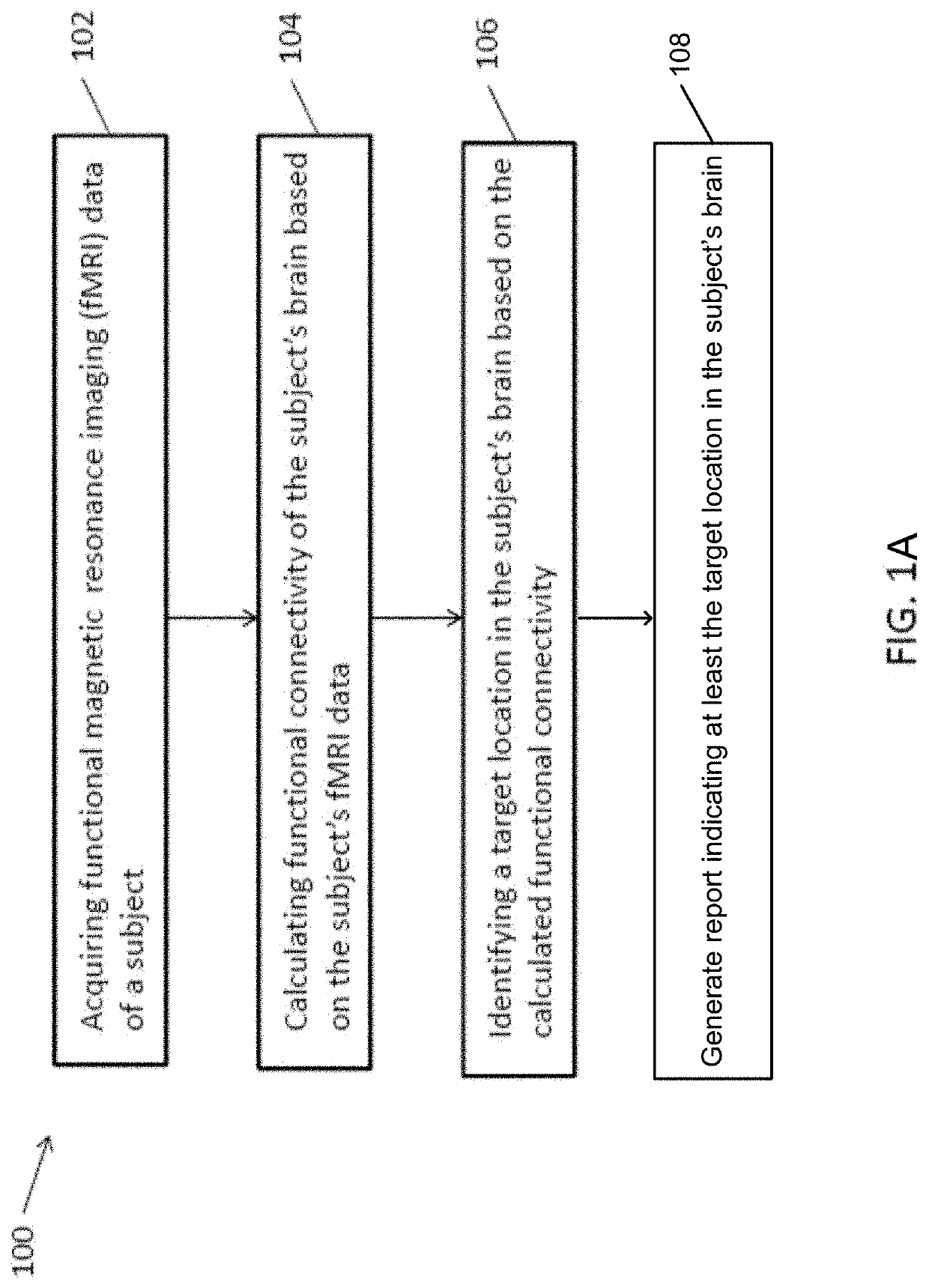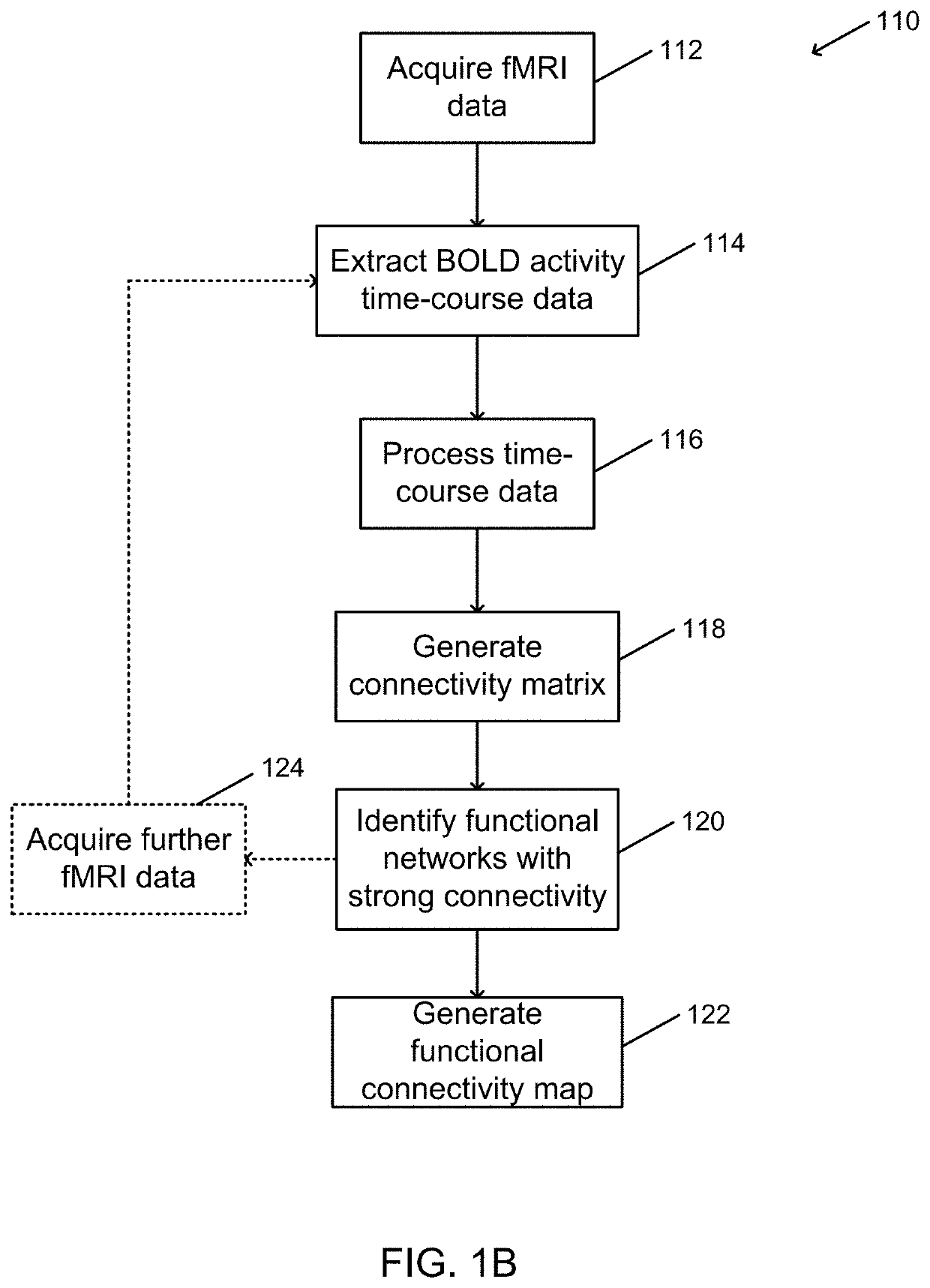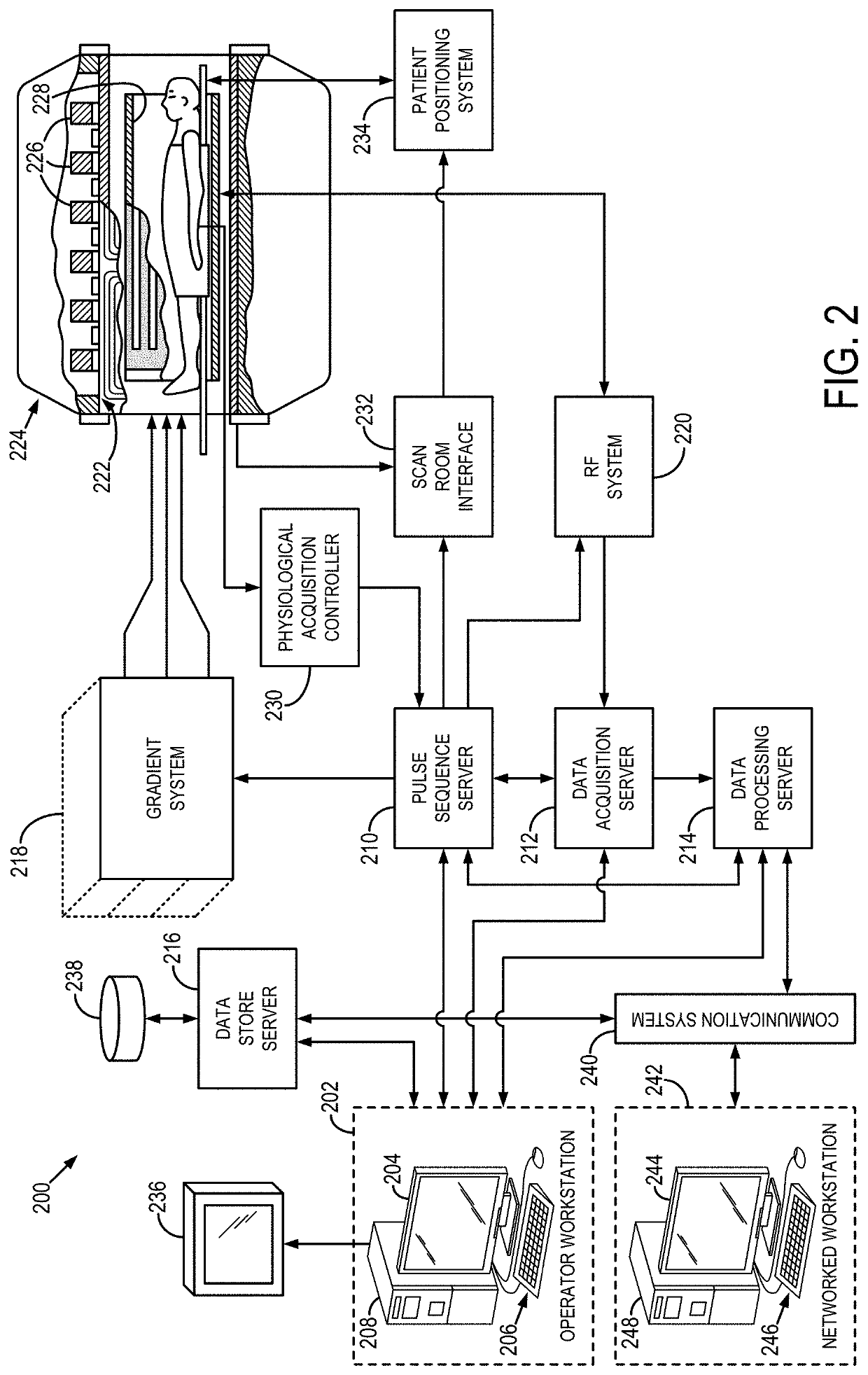Systems and method of precision functional mapping-guided interventional planning
- Summary
- Abstract
- Description
- Claims
- Application Information
AI Technical Summary
Benefits of technology
Problems solved by technology
Method used
Image
Examples
limiting example 1
Non-Limiting Example 1
Integrative and Network-Specific Connectivity of the Basal Ganglia and Thalamus Defined in Individuals
[0098]FIG. 4 is an illustration of a non-limiting framework for subcortical functional organization. Subcortical resting state functional connectivity (RSFC) was characterized along two principal axes, each with two levels (Group vs. Individual; Network specific vs. Integrative). “Group” refers to RSFC that is common across subjects, whereas “Individual” refers to RSFC that is individually specific. “Network specific” refers to regions of the subcortex with preferential RSFC to a single cortical network, whereas “Integrative” refers to regions of the subcortex with preferential RSFC to multiple cortical networks.
[0099]To measure cortico-subcortical RSFC in ten individuals from the Midnight Scan Club (MSC) dataset, BOLD activity timecourses were extracted from each voxel in the basal ganglia and thalamus. Cortical time series were averaged across all vertices in...
example 2
Individual-Specific Functional Connectivity of the Amygdala
[0174]Psychiatric disorders are a leading cause of morbidity and mortality worldwide. Over the past few decades, little progress has been made in reducing this burden, in part because personalized brain-based models of mental illnesses are lacked to be used to diagnose and guide treatment in individual subjects. The amygdala is a structure in the medial temporal lobe that is essential to any personalized model of mental illness that serves to transform this outlook. In research settings, functional connectivity of the amygdala as measured with functional magnetic resonance imaging (fMRI) has been extensively correlated with symptoms, longitudinal course, and treatment response in many different psychiatric disorders. A substantial roadblock in translating these research findings into clinical-practice biomarkers, however, is an inadequate understanding of the amygdala's role within the larger functional network organization ...
PUM
 Login to View More
Login to View More Abstract
Description
Claims
Application Information
 Login to View More
Login to View More - R&D
- Intellectual Property
- Life Sciences
- Materials
- Tech Scout
- Unparalleled Data Quality
- Higher Quality Content
- 60% Fewer Hallucinations
Browse by: Latest US Patents, China's latest patents, Technical Efficacy Thesaurus, Application Domain, Technology Topic, Popular Technical Reports.
© 2025 PatSnap. All rights reserved.Legal|Privacy policy|Modern Slavery Act Transparency Statement|Sitemap|About US| Contact US: help@patsnap.com



